|
Displaying items by tag: Vatican
From the Belvedere in the Vatican to Villa d’Este in Tivoli and the Boboli Gardens in Florence, Italian gardens are imbued with Renaissance traditions, bending nature to create works of art.
For its latest High Jewelry collection, Bulgari found inspiration in the geometric precision and architectural complexity of these gardens to bring out their most evocative elements using precious stones.
When a senior Vatican official made a call to a tattoo removal specialist, it was not a red-faced cardinal hoping to erase an anchor on his biceps. The Vatican Museum had requested the use of tattoo removal equipment for the delicate removal of dirt particles covering some of its most priceless works.
Reached through one of its Italian associates, Lyntons Lasers, the Cheshire company that supplied the tatto removers, later donated one of its machines to the museum...
The Catholic Church is often seen as an institution perpetually at odds with modernity, clinging to Latin as its official language and maintaining its all-male hierarchy, topped by an absolute monarch in the form of the pope, centuries after such a style of governance went out of fashion elsewhere.
But every now and again it upends its own image by showing it has its finger firmly on the pulse. Right now, the must-have accessory for any self-respecting great museum around the world is its own movie – a lavishly-made epic for cinema-goers, with soaring strings and spectacular camera angles, best of all in 3D, that shows off its greatest treasures to a global audience as they’ve never been seen before.
And so, using state-of-the-art technology and backed by Sky, the snappily titled Vatican Museums 3D is today on release at 250 UK and Irish cinemas, a showstopper of a 70-minute tour around the Vatican Museums.
High above the altar in the Vatican's Sistine Chapel, the halo around Jesus Christ's head in Michelangelo's famous frescoes shines with a brighter glow, thanks to a revolutionary new lighting system.
Angels, sybils and prophets in blues, pinks and golds, once lost in the gloom, are brought into sharp relief by 7,000 LED lamps designed specifically for the prized chapel, where red-hatted cardinals have elected new popes since the 15th century.
A state of the art ventilation system has also been installed to protect the frescoes from humidity, enabling up to 2,000 people at a time to safely visit one of the world's top tourist attractions, which draws over six million people a year.
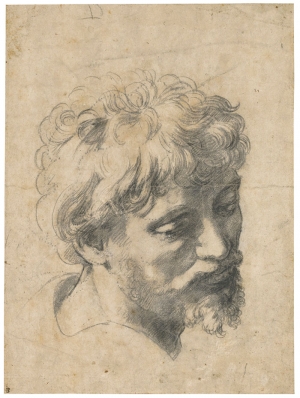
British authorities have lifted the export ban on Raphael’s drawing Head of a Young Apostle. The Old Master work will go to Leon Black, a New York-based billionaire who paid $47.9 million for it at Sotheby’s London in December 2012. The drawing, which was created between 1519 and 1520, was a study for the artist’s revered painting The Transfiguration, which resides in the Vatican’s collection.
The UK’s arts minister Ed Vaizey quickly placed the work under an export ban following the sale, which broke the auction record for a work on paper. The point of the ban was to provide enough time for an interested buyer to raise the money necessary to keep the drawing in the country. The ban expired on July 3, 2013 and was not extended.
Britain has recently employed a number of export bans on culturally significant works. Two pieces, which were purchased by the J. Paul Getty Museum in Los Angeles, are currently being held in the U.K. Officials are waiting to see if any buyers will step forward for a rare 15th century Flemish manuscript titled Roman de Gillion de Trazignes and Rembrandt Laughing, a self-portrait by the Dutch master. The Getty paid $5.8 million and $25 million for the works respectively.
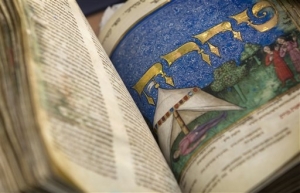
On Monday, April 29, 2013 the Metropolitan Museum of Art in New York and the Israel Museum in Jerusalem announced that they had come together to jointly acquire the Mishneh Torah. A rare 15th century illuminated Hebrew manuscript, the Mishneh Torah features text from Moses Maimonides, a Jewish writer and philosopher from the Middle Ages. The Met and the Israel Museum have agreed to exhibit the Torah at both institutions on a rotating schedule.
Created in 1457, the Mishneh Torah is the second of a two-volume manuscript and features six large illustrations and 32 smaller images in the style of Northern Italian Renaissance miniature painting. The Vatican owns the first volume of the manuscript. The Mishneh Torah was restored at the Israel Museum’s conservation lab and has been on loan to the institution since 2007.
The Mishneh Torah was to be the leading item at an auction of the collection of Michael and Judy Steinhardt on Monday at Sotheby’s. The manuscript, which was expected to bring between $4.5 million and $6 million at auction, was purchased by the museums before the sale began. Sotheby’s has declined to reveal how much the two institutions paid for the Mishneh Torah.
Michael Steinhardt, a hedge fund manager and philanthropist, and his wife, Judy, have amassed a renowned Judaica collection, which includes silver and decorative objects, textiles, and fine art. Steinhardt said, “The acquisition of this remarkable manuscript by the Israel Museum and the Metropolitan Museum of Art is poetic given Judy’s and my longstanding involvement with both institutions; it is particularly meaningful that this event marks the first significant collaboration between the two museums.”
A temporary export bar has been placed on a drawing by Raphael (1483-1520) titled Head of a Young Apostle. The Renaissance masterpiece, which is worth upwards of $47 million, is one of finest works held in a British private collection.
The drawing has been a part of the Duke of Devonshire’s collection at Chatsworth since the 1700s and was sold at Sotheby’s in December for $47.8 million, nearly three times the drawing’s low estimate. The Raphael work, which broke the auction record for a work on paper, was sold to benefit the Chatsworth’s long-term future and that of its collections. The UK’s arts minister, Ed Vaizey, hopes that an export bar will provide enough time for an interested buyer to raise the money necessary to keep the drawing in the country.
Head of a Young Apostle was created between 1519 and 1521 as a study for one of the figures in Raphael’s final painting, the Vatican’s The Transfiguration.
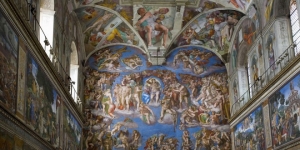
The five million tourists who visit the Sistine Chapel every year pose a threat to the delicate frescoes that adorn its walls. A number of important Renaissance artists contributed to the Chapel’s paintings including Sandro Botticelli (circa 1445-1510), Pietro Perugino (circa 1446/1450-1523), and Michelangelo (1475-1564), who painted 12,000 square feet of the chapel’s ceiling between 1508 and 1512 including his masterpiece, The Last Judgment (1535-1541).
The Vatican’s director announced that visitors will be vacuumed and cooled down before entering the chapel in an effort to reduce any potential damage, as dust, temperature, and humidity are known to be harmful to the paintings' surfaces. The heat and dirt tracked in by the high volume of visitors has been blamed for layers of grime that have accumulated on the chapel’s frescoes over the years so Vatican officials will lay out carpet before the entrance and install suction vents as well as lower temperatures inside.
Officials hope that these preventative measures will keep the frescoes intact for the enjoyment of future generations.
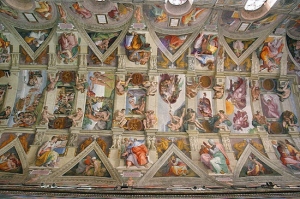
The 500-years-old Sistine Chapel is the most visited room in the world. Around five million people a year flock to Rome to see Michelangelo’s ceiling frescoes, one of the wonders of Western civilization. After the Sistine Chapel ‘s 500th birthday this past Wednesday, the Vatican warned that they might need to limit the number of visitors in order to protect the masterpiece.
Completed on October 31,1512 after four years of work by Michelangelo, the Sistine Chapel has never ceased to awe visitors and has become one of the most famous images in art history. The irreplaceability of the Sistine Chapel has many critics asking the Vatican to enforce limitations on the number of visitors per year. However, Antonio Paolucci, the director of the Vatican Museums, says he doesn’t foresee that happening anytime in the near future. He did admit that it might be a necessary measure further on down the road.
The dust, humidity, and carbon monoxide produced by visitors could possibly damage Michelangelo’s frescoes in the long term. In 1994, a 14-year restoration project that included an elaborate dehumidifying system, air conditioners, filters, and micro-climate controls was completed. However, the number of visitors to the Chapel continues to grow, putting the system under increasing stress. Paolucci is currently looking into newer technologies that will prevent the Vatican from having to limit the number of visitors to the Sistine Chapel.
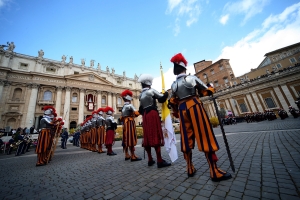
Since 2009, there has been chatter that the Vatican would have its own pavilion at the Venice Biennale. It has finally been confirmed that they will take part in the contemporary art fair’s 55th year. A vice president of the Vatican’s Holy See promoting committee attended a Biennale press conference on October 26.
The Biennale, which will take place from June 1 to November 24, 2013, welcomes eight new countries to the upcoming fair including the Bahamas, Kuwait, the Maldives, and Paraguay. While the Vatican has kept the works they plan to exhibit under wraps, an Italian newspaper reported that they will feature less than 10 men and women from around the world. They also said that a mix of established and emerging artists on view will explore the first 11 chapters of the Book of Genesis.
Curated by Massimiliano Gioni, the Italian-born associate director of the New Museum in New York, the Biennale’s headline exhibitions will take place at the Palazzo delle Esposizioni and the Arsenale. Gioni plans to incorporate older pieces from the late 19th and 20th century into the fair.
|
|
|
|
|